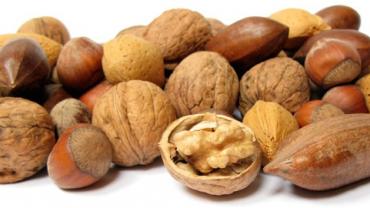
For most vitamins and minerals there’s at least one key function that likely springs to mind as soon as you hear the word:
Calcium: bones!
Vitamin A: eyesight!
Chromium: blood sugar regulation!
Iodine: thyroid!
Vitamin E: fertility!
Manganese: … *crickets* …
If you’re unable to rattle off multiple functions for manganese in the body you’re not alone. According to the Linus Pauling Institute “The derivation of its name from the Greek word for magic remains appropriate because scientists are still working to understand the diverse effects of manganese deficiency and manganese toxicity in living organisms.” Indeed manganese is a mineral that seems destined to live in the shadows of other nutrients underappreciated and poorly understood even among healthcare professionals. It’s time to give this trace mineral some well-deserved recognition for its many roles in metabolism and overall health.
Manganese is primarily contained in the bone kidneys liver and pancreas. Its concentration is especially high in mitochondria where it is a required cofactor for mitochondrial superoxide dismutase (MnSOD) a key antioxidant enzyme for protecting fragile fatty acids in mitochondrial membranes from lipid peroxidation.
If that’s all manganese did it would still be critical to have adequate levels especially considering the role of mitochondrial dysfunction in neurodegenerative and neuromuscular conditions. But manganese is instrumental for far more than just SOD. Gluconeogenesis is dependent on manganese-containing enzymes (specifically pyruvate carboxylase and phosphoenolpyruvate carboxykinase [PEPCK]) making this mineral important for healthy blood sugar regulation particularly between meals and perhaps even more so for individuals on low carbohydrate or ketogenic diets. This is noteworthy because whole grains and certain beans—which would be avoided on such diets—are among the richest food sources of manganese. However leafy green vegetables nuts seeds tea and coffee are also good sources and fall well within low carb parameters. (Meat and dairy are poor sources.) Manganese is also required for proper dispensation of protein and amino acids—or rather their metabolic wastes since this mineral is a cofactor for the arginase enzyme in the urea cycle.
Individuals whose primary sources of manganese are whole grains and beans may not be absorbing the full content of the mineral. The bioavailability of manganese from foods is only 1-25% and high levels of phytate (found in whole grains and beans) may inhibit absorption of manganese (along with zinc calcium and other minerals). Moreover the milling and refining of grains may result in a loss of up to 86% of the manganese and modern farming techniques may have resulted in soil that is lower in manganese to begin with. Nevertheless on the whole vegetarian diets tend to be higher in manganese than omnivorous diets. Other factors that may interfere with manganese absorption include high iron intake (iron and manganese compete for binding and transport proteins) and high-dose calcium supplementation.
Manganese is a cofactor in the synthesis of chondroitin sulfate as well as for glycosyltransferase enzymes involved in the synthesis of proteoglycans which are structural components of healthy cartilage and bone matrix. Normal insulin production and secretion is manganese-dependent as well and animals raised on manganese-deficient diets have impaired carbohydrate metabolism and poor glycemic control. (On the other hand high levels of manganese also adversely affect the endocrine response to a carbohydrate load.)
Overt manganese deficiency is rare but may occur in patients receiving total parenteral nutrition (TPN). Manganese toxicity is also rare and is nearly impossible to accomplish via diet (except again for TPN in which cases have been reported). Most cases of manganese toxicity have occurred among miners and welders chronically exposed to manganese dust. Manganese toxicity results in neurological changes that resemble Parkinson’s disease and dystonia. These changes (tremors difficulty walking facial spasms) may be preceded by behavioral and psychiatric changes such as irritability aggressiveness and possibly even hallucinations and they are not correctable with levodopa.
The RDA for manganese set by the Food and Nutrition Board of the National Academy of Sciences is 2.3mg and 1.8mg for adult men and non-pregnant women respectively with a tolerable upper intake limit of 11mg/day for both populations (as well as pregnant and lactating adult women). However studies employing higher doses (13-20mg/day for up to a year) showed no adverse effects.
Manganese: complete mystery no more!